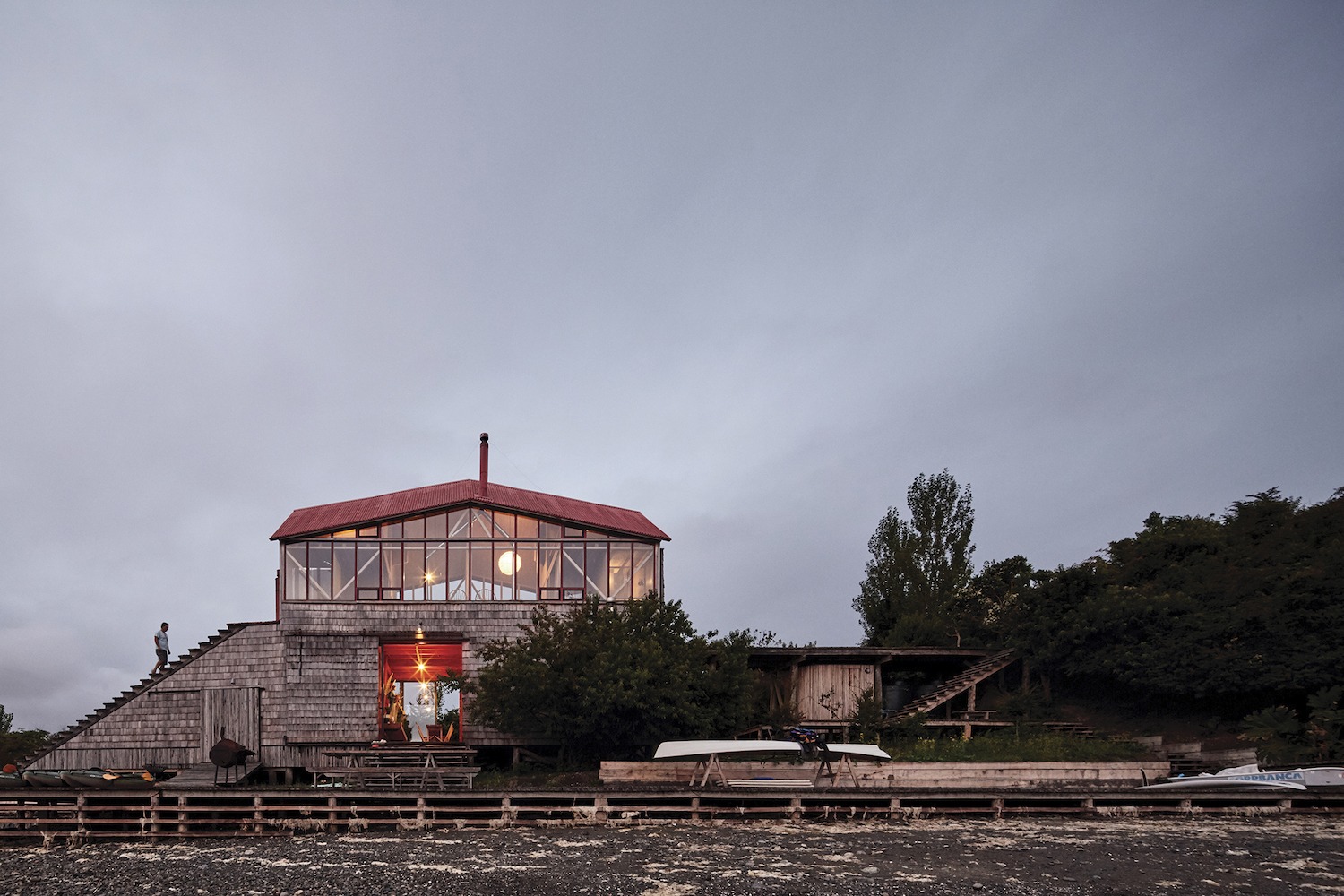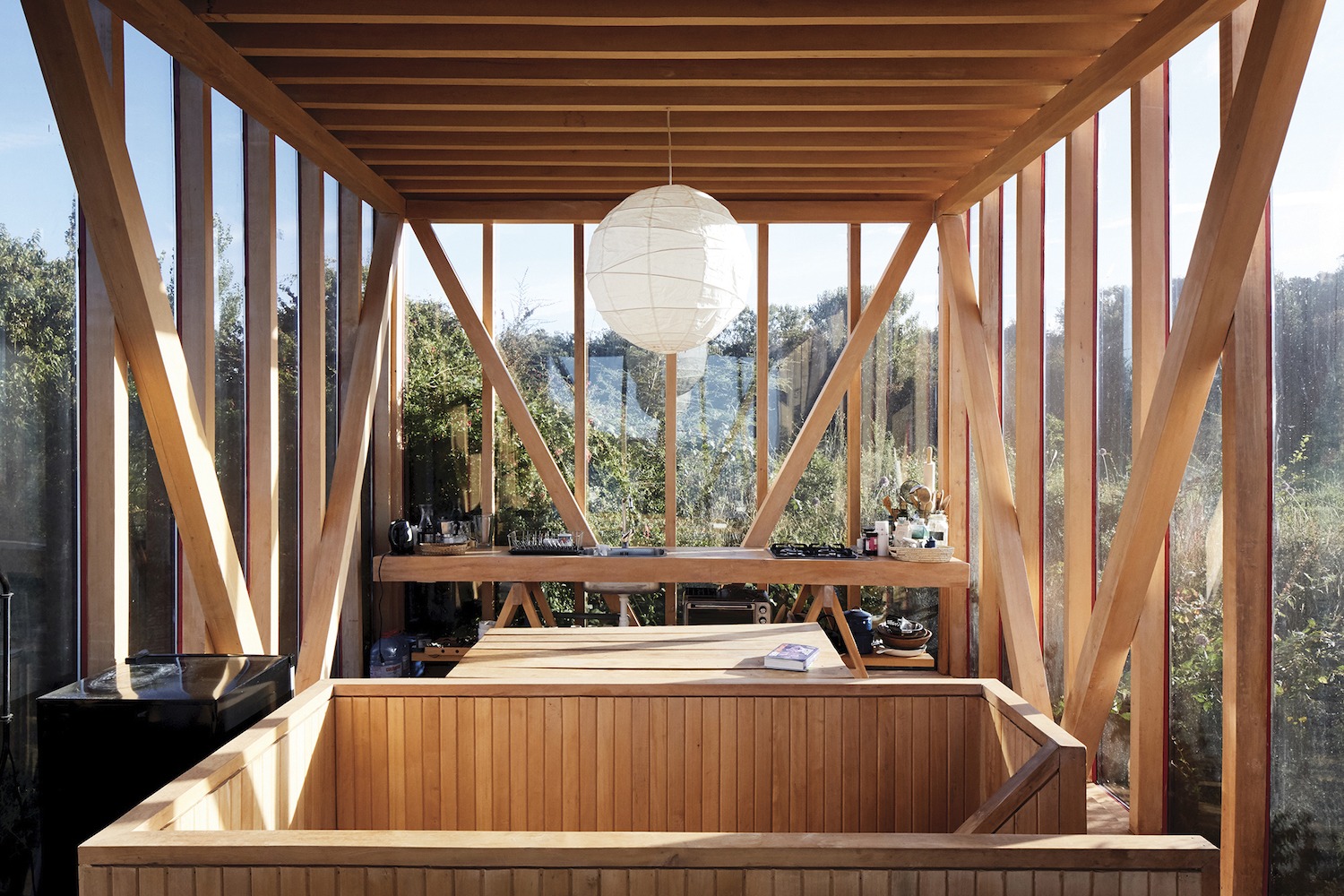Weather is incessantly emphasised in Darwin’s account of the Chiloé Archipelago, compiled in The Voyage of the Beagle, when he visited the region in 1834: “I should think there are few parts of the world, within the temperate regions, where so much rain falls. The winds are very boisterous, and the sky almost always clouded: to have a week of fine weather is something wonderful.”

Nearly two centuries later, and after fifteen years of sailing around the fjords of the Archipelago, Guillermo Acuña, already an expert and admirer of the territory (and less cynical about the weather), decided that the best permanent anchor for his sailboat was on the eastern central coast of Isla Grande de Chiloé, in the Bay of Rilán. Here lies Isla Lebe, an isthmus with low tide and an islet with high tide. He was fascinated by this geographical condition and the ever-changing landscape owing to the drastic tides. For Guillermo, the design was merely conceptualised as ‘a ship on land’. He describes, “the project is born as a series of refuges for sailors, large enough to spend a week of bad weather and small enough to want to go sailing.”
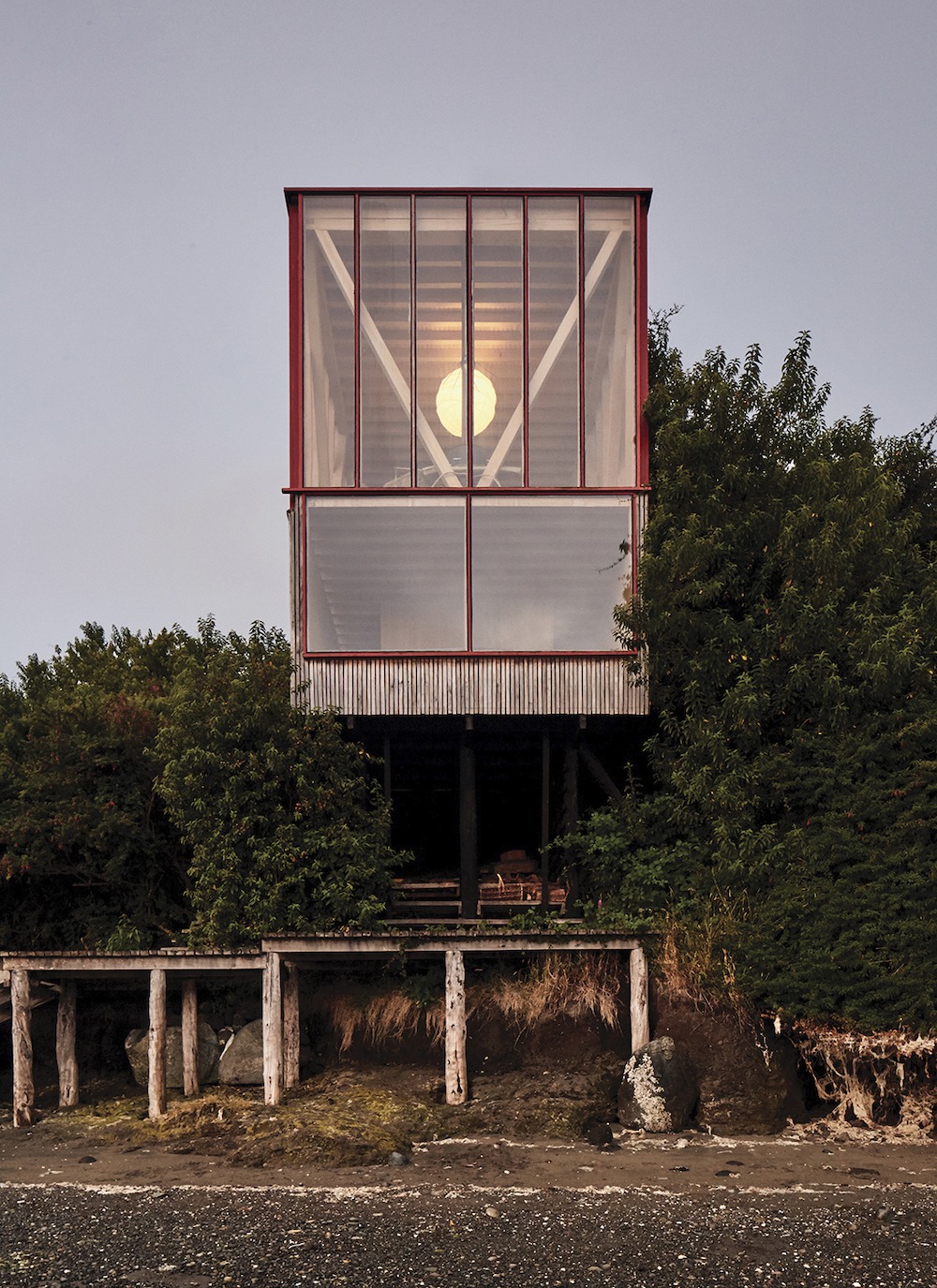
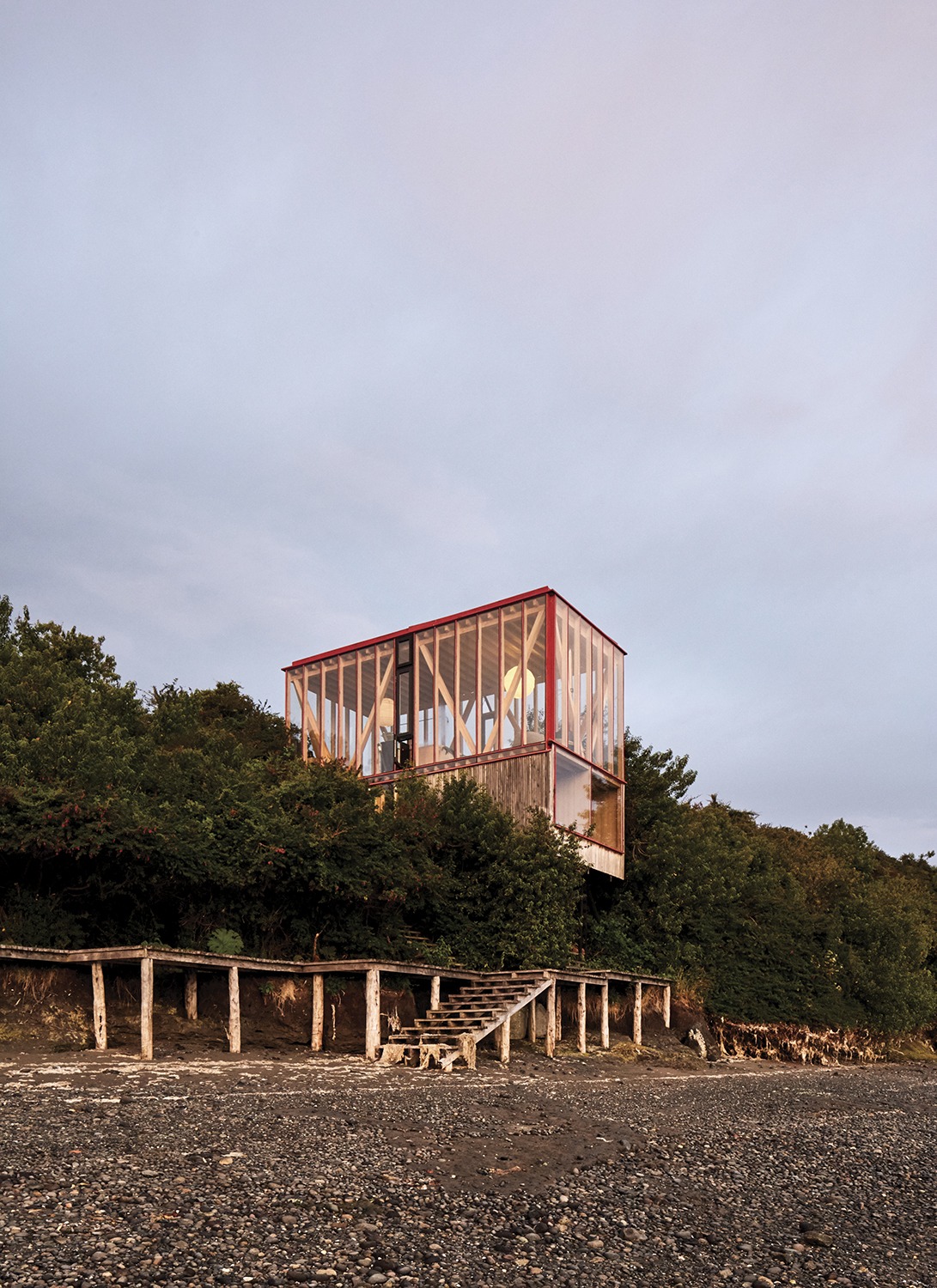
My journey to Isla Lebe was in April 2018, on a bright blue-skied day, with a group of architecture students and professionals from around the world to realise the first edition of the Architectural Association Visiting School Programme in Chiloé Archipelago. After a 1,5 hour flight from Santiago to Puerto Montt and ferrying across to the main island of Chiloé, we found ourselves in a relentless rush as we convoyed to Isla Lebe – our basecamp for the duration of the workshop – to make it in time for the low tide. Alas we failed, and Isla Lebe was now completely disconnected from Isla Grande de Chiloé! Luckily Guillermo, our host and collaborator, had left a small boat for us to make our way across in batches. Even amidst the hurry and a rapidly submerging roadway, it was hard to miss Guillermo’s Project, inscribing the landscape against the backdrop of the Andean Range sinking into the Pacific Ocean on the mainland. The indelible intervention through the clever positioning of the three red dwellings immediately instigated a new datum line for my sight, across the framed view of the Islet on our approach.
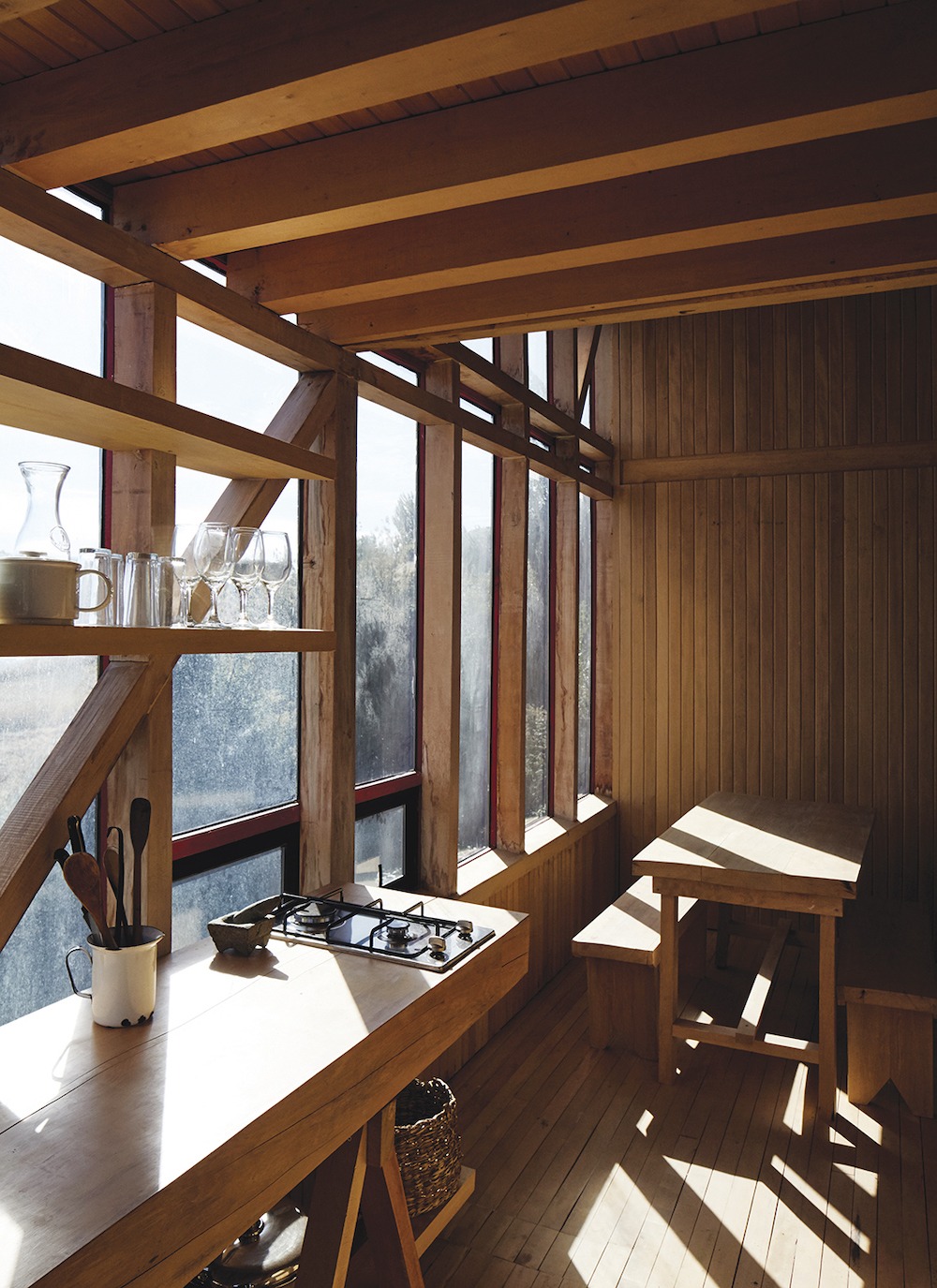
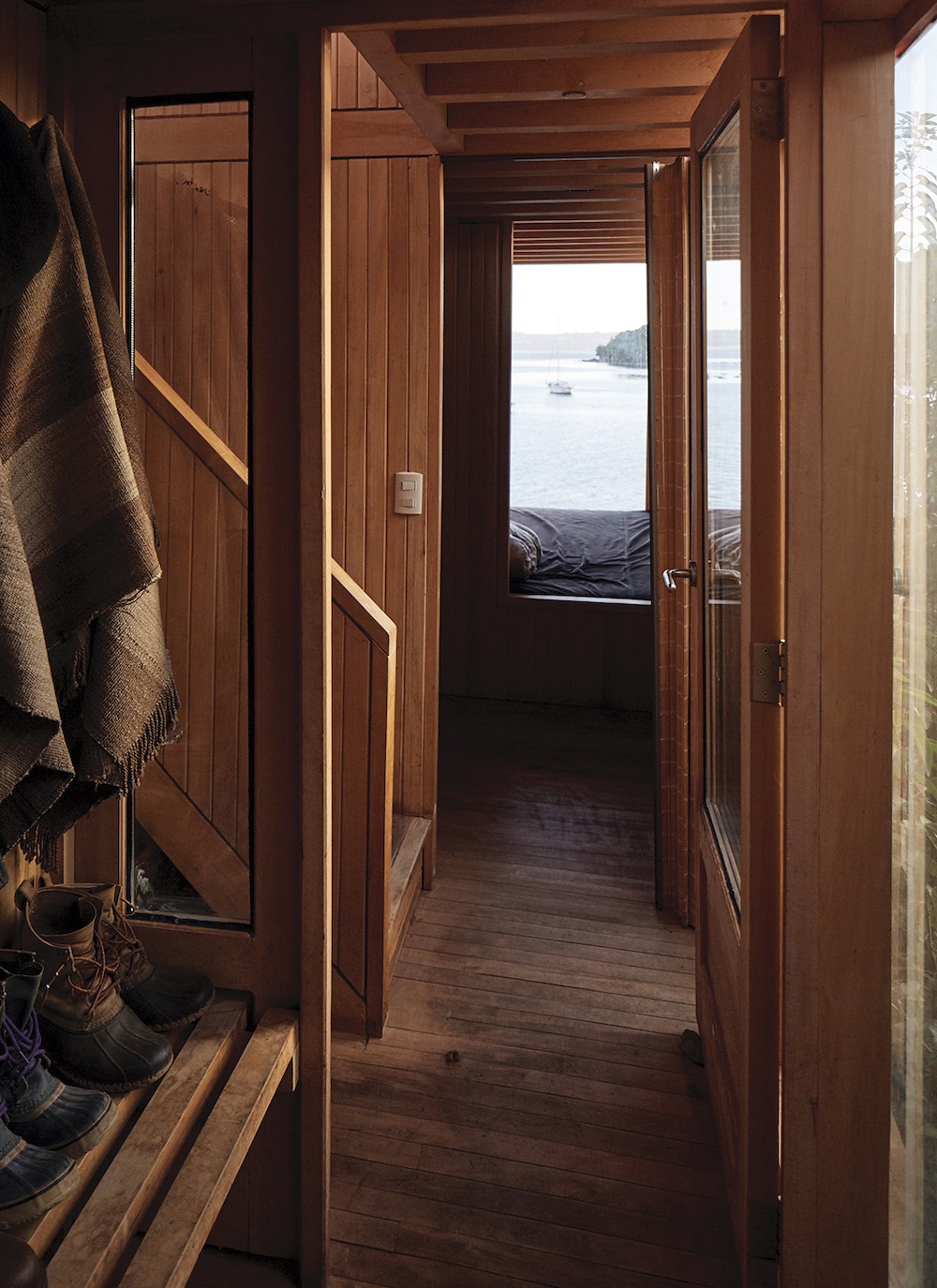
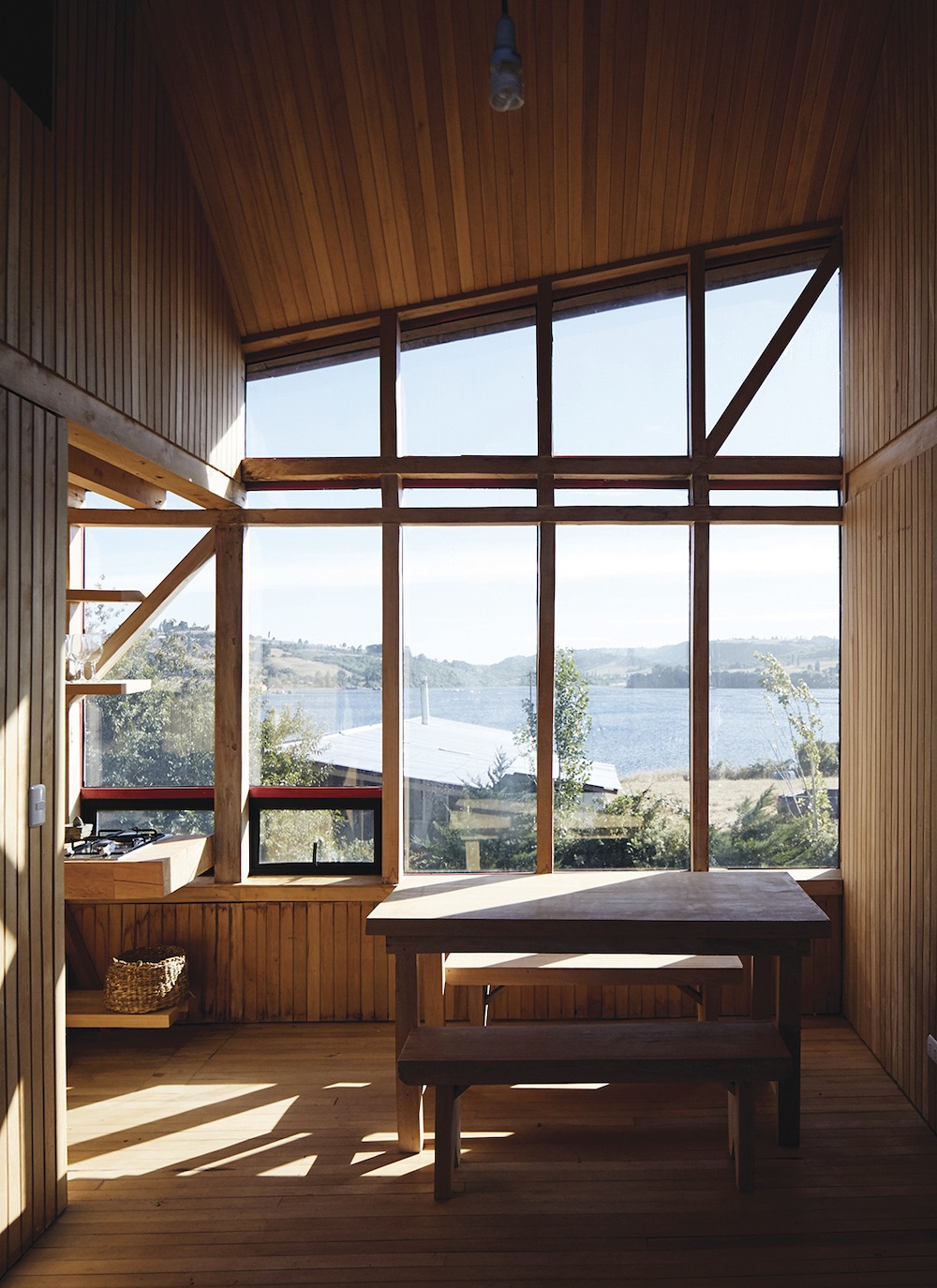
My journey to Isla Lebe was in April 2018, on a bright blue-skied day, with a group of architecture students and professionals from around the world to realise the first edition of the Architectural Association Visiting School Programme in Chiloé Archipelago. After a 1,5 hour flight from Santiago to Puerto Montt and ferrying across to the main island of Chiloé, we found ourselves in a relentless rush as we convoyed to Isla Lebe – our basecamp for the duration of the workshop – to make it in time for the low tide. Alas we failed, and Isla Lebe was now completely disconnected from Isla Grande de Chiloé! Luckily Guillermo, our host and collaborator, had left a small boat for us to make our way across in batches. Even amidst the hurry and a rapidly submerging roadway, it was hard to miss Guillermo’s Project, inscribing the landscape against the backdrop of the Andean Range sinking into the Pacific Ocean on the mainland. The indelible intervention through the clever positioning of the three red dwellings immediately instigated a new datum line for my sight, across the framed view of the Islet on our approach.
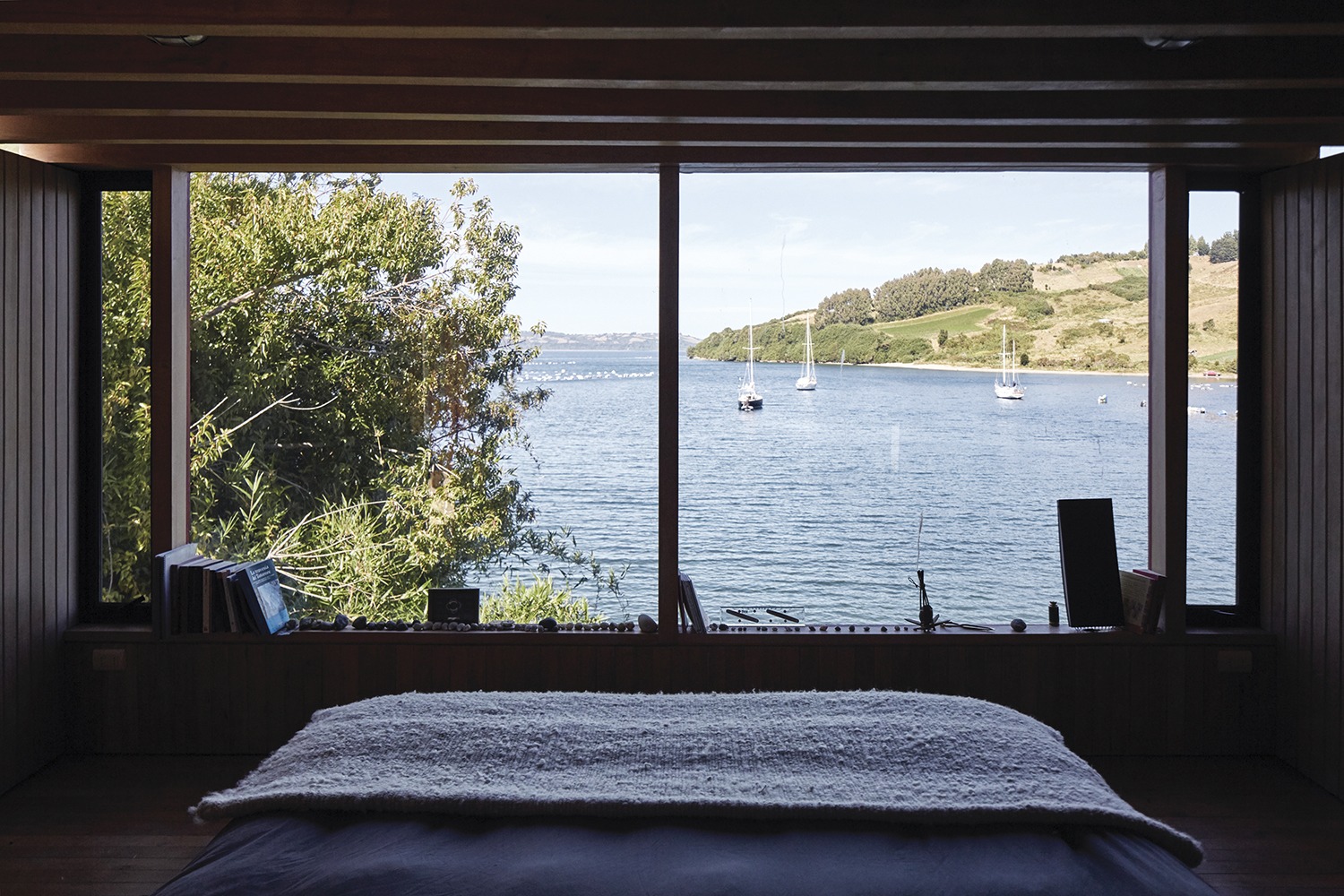
The aim of our workshop is very much about embracing the Darwinian fieldwork approach. Through a hands-on method of surveying, collecting, recording, and uncovering endemics to the Archipelago, rather than relying on Google as means of research, our choice for the basecamp proved stimulating. Although Guillermo had initiated the project with the idea of designing a retreat to accommodate friends and family, the resultant design augured an ideal venue for us. The participants enjoyed their sleeping quarters in the largest of the three dwellings, which was conceived as a boathouse in 2013.
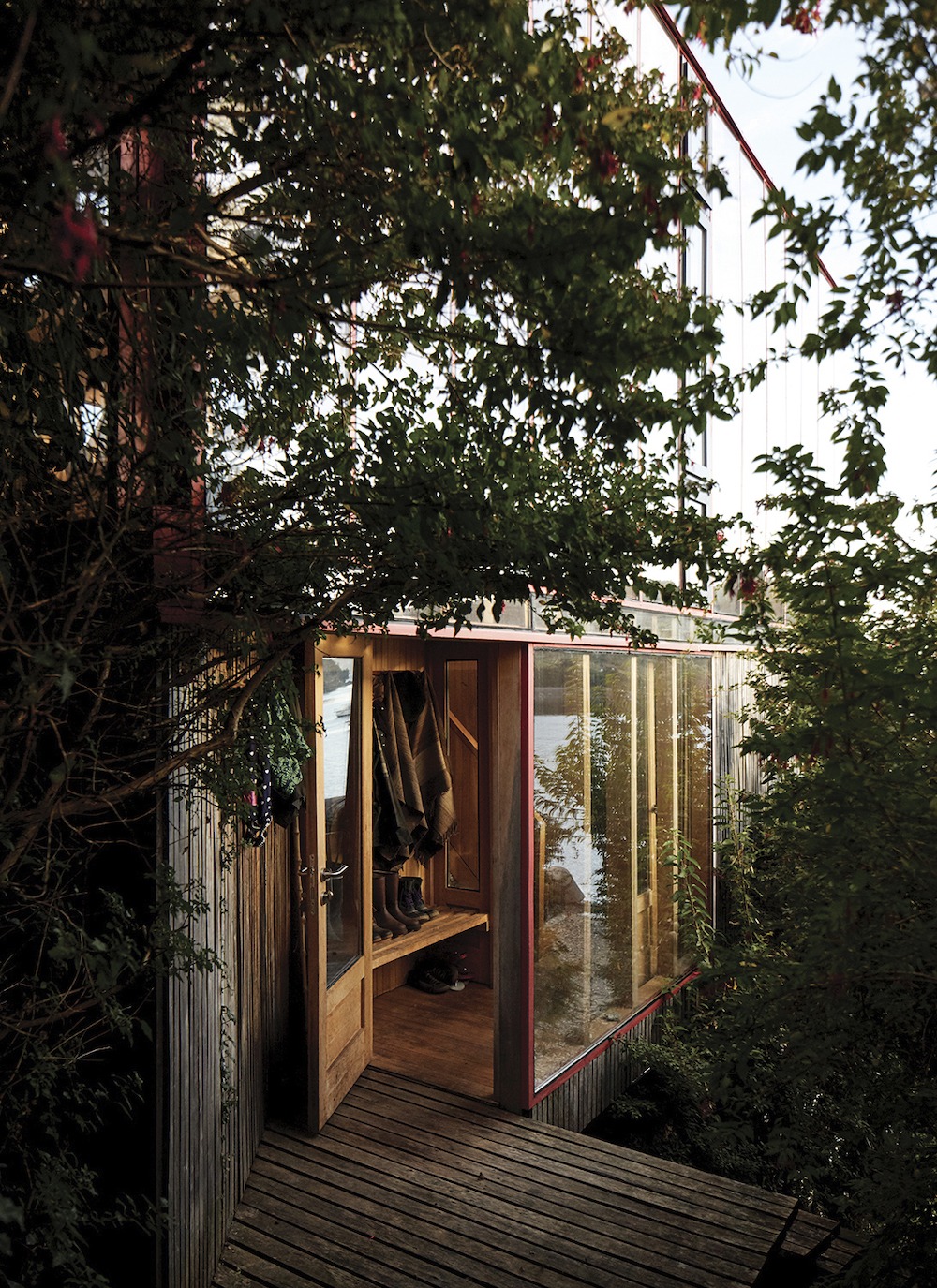
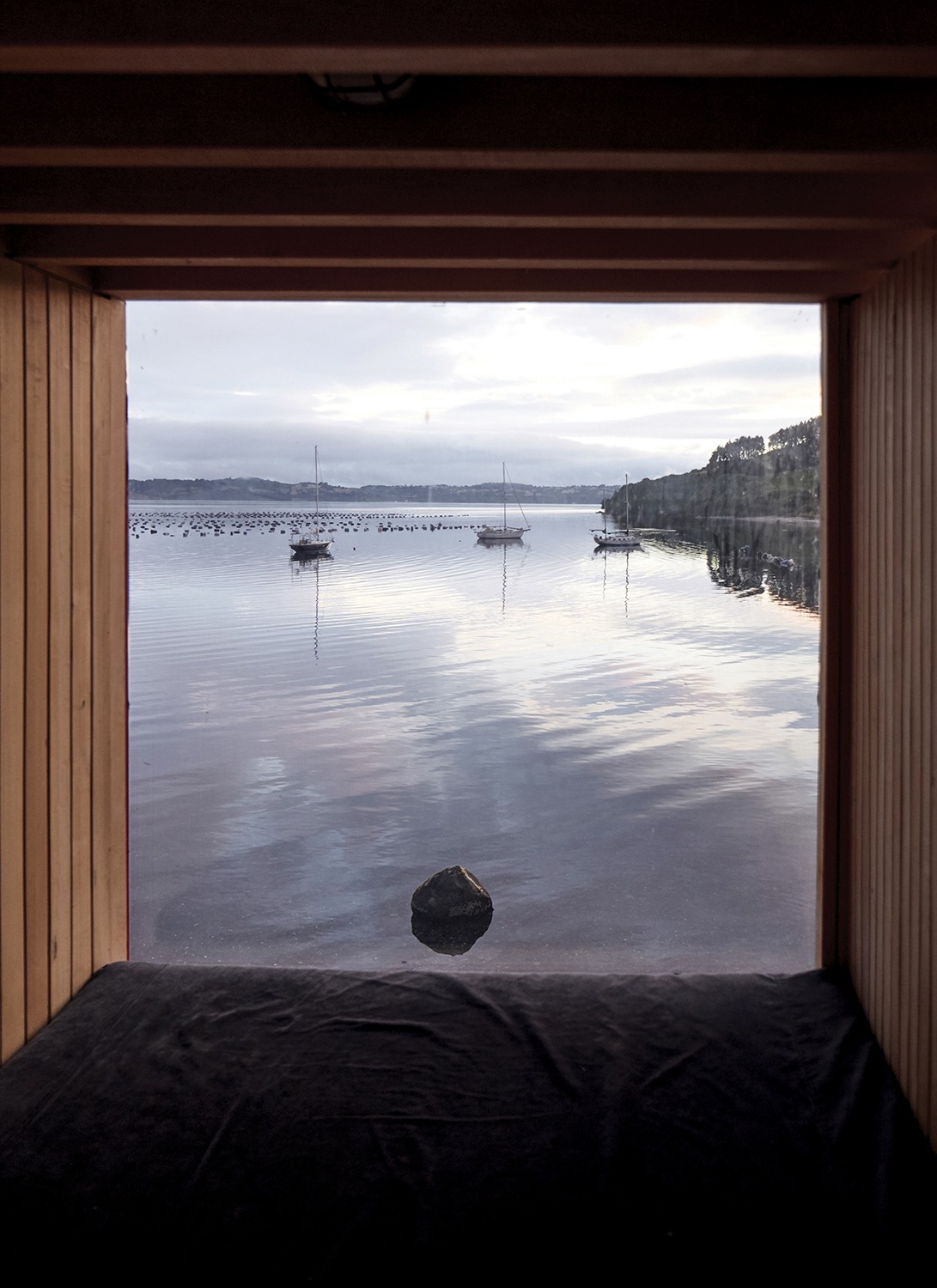
Guillermo later extended the design with a Casa Malaparte external staircase, consequently creating a kitchen/living area on the ground level which provided a great setting for us to exchange stories and findings in the evenings as a collective of researchers conversing around the fireplace. I had the privilege to stay in one of the two fully glazed units which have an inverted floor-plan: floating-like bedrooms occupy the ground level and on the upper level a watchtower-like living room, with a mini kitchen and the ever important fireplace, looks out over the landscape. The site itself was our other major asset. With its strategic and captivating location in the heart of the Archipelago, it played an instrumental role as we set out on trajectories by land and sea for our fieldwork. Guillermo mentioned the juxtaposition of his design and the context as “minimum, efficient and austere spaces both in their sizes and materials, because the only luxury here is the landscape.”
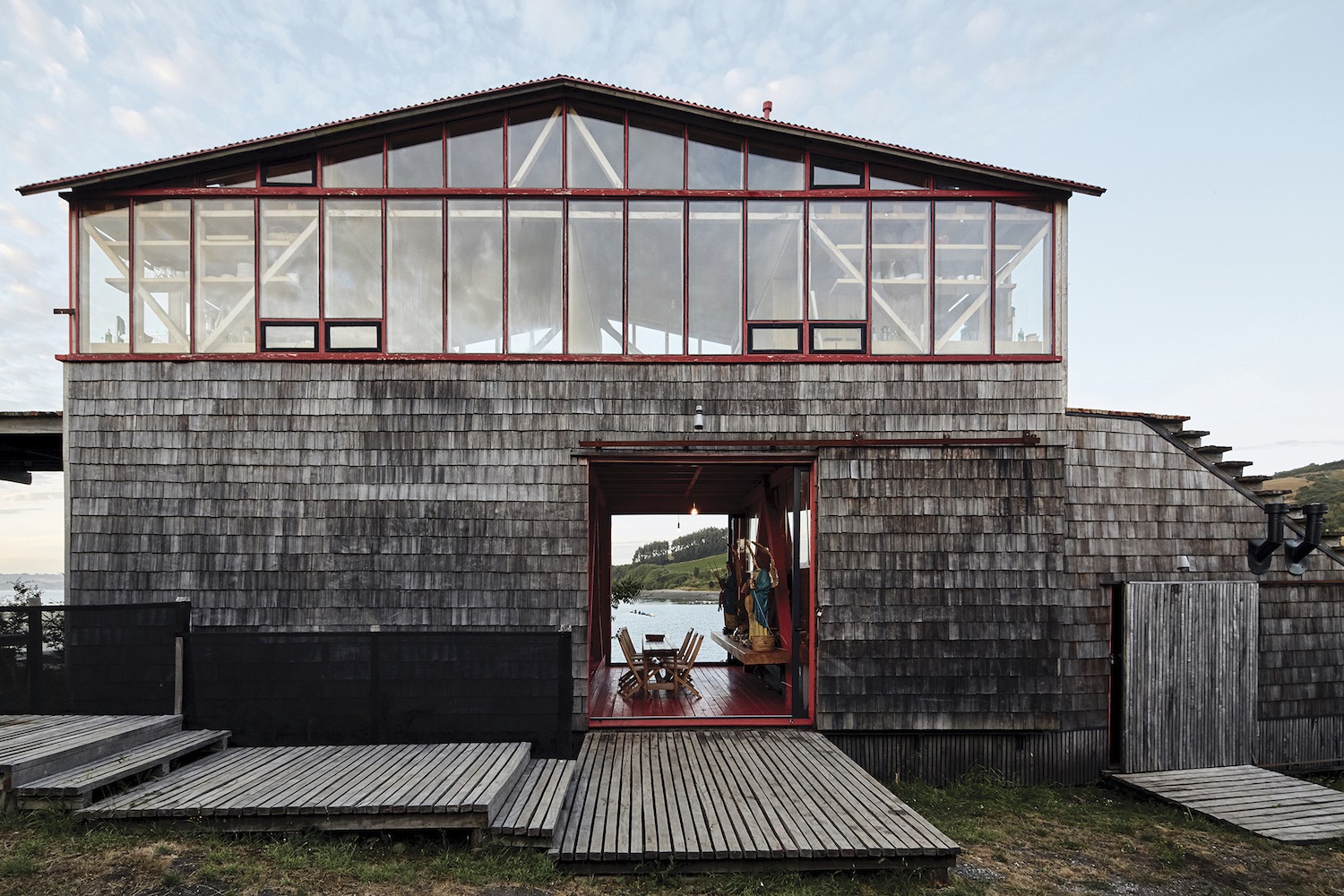
During the cataloguing of 16 UNESCO World-Heritage listed churches on the main island, I began to understand the complexity of the so-called Chilota School of Architecture. The ceilings of these entirely wooden ecclesiastical structures resembled the inverse of a boat’s hull, and their tall turrets almost transformed them to lighthouses. I realised the importance of building close to the sea in the culture of the Archipelago, despite the ebb and flow of the tides. Although we didn’t get to experience it, the domineering example of this is ‘la minga’ – a local tradition of moving houses on the sea. I was able to trace back these nuances to Isla Lebe, developing my understanding and the thought process behind Guillermo’s design approach.
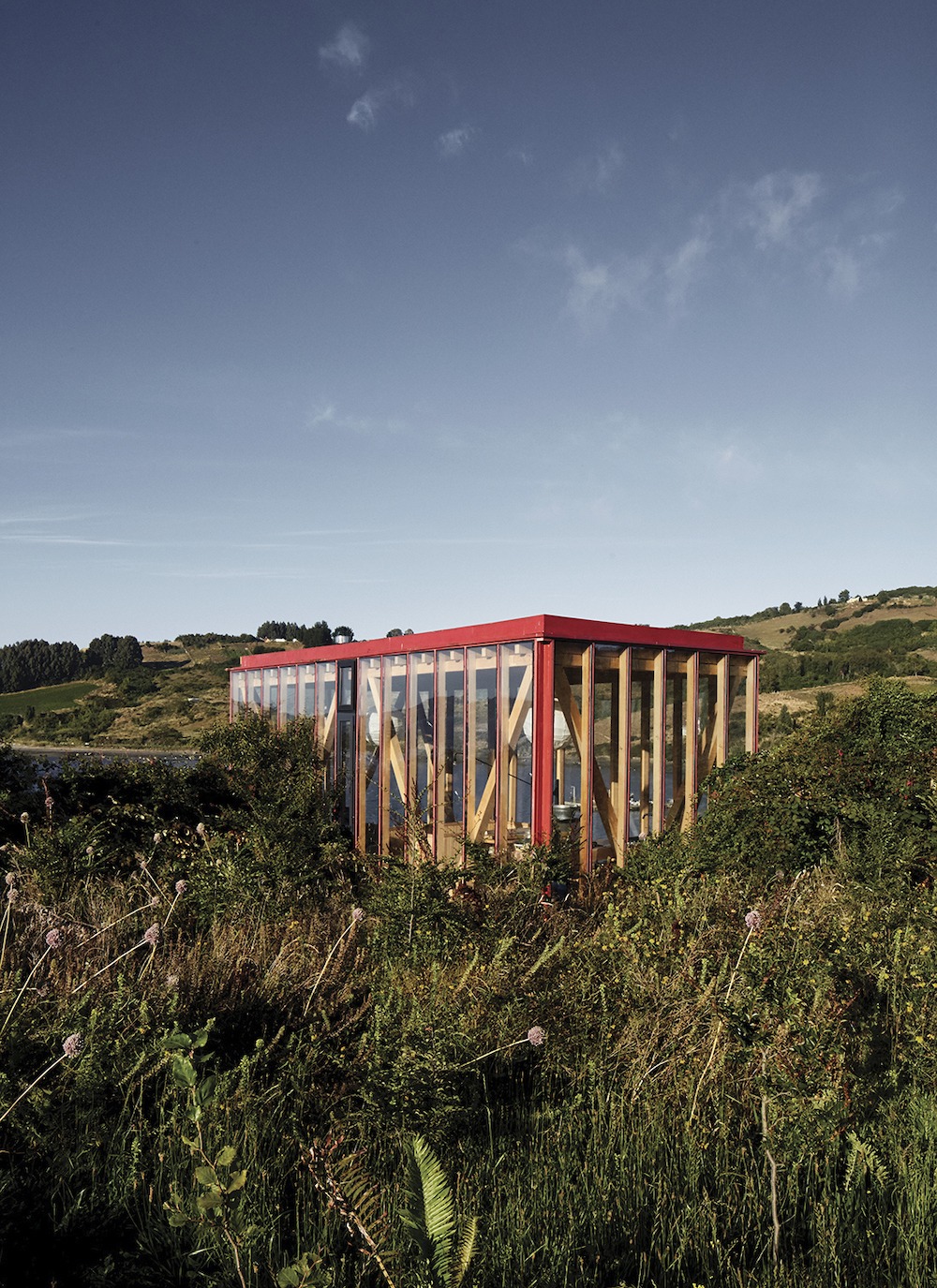
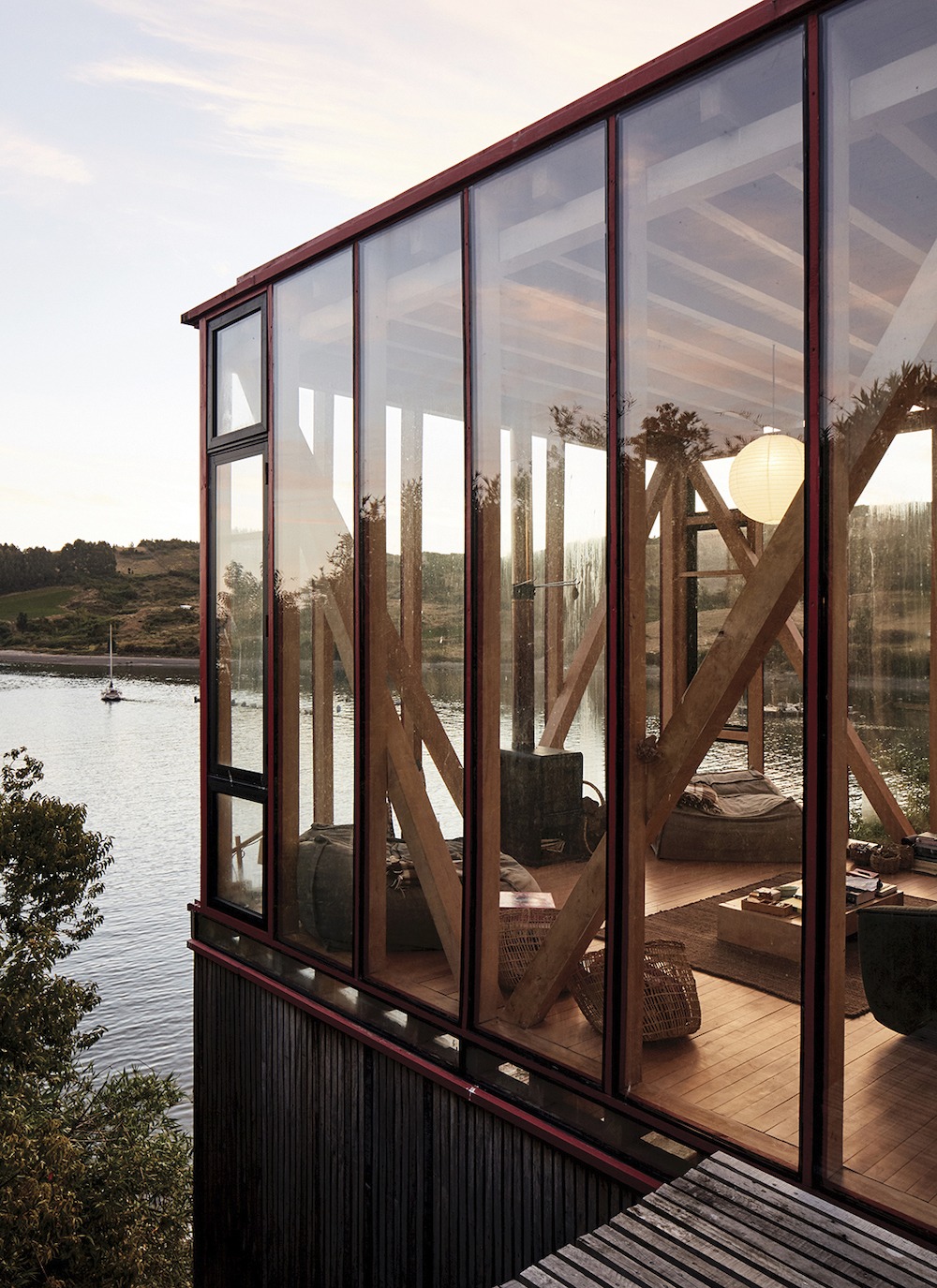
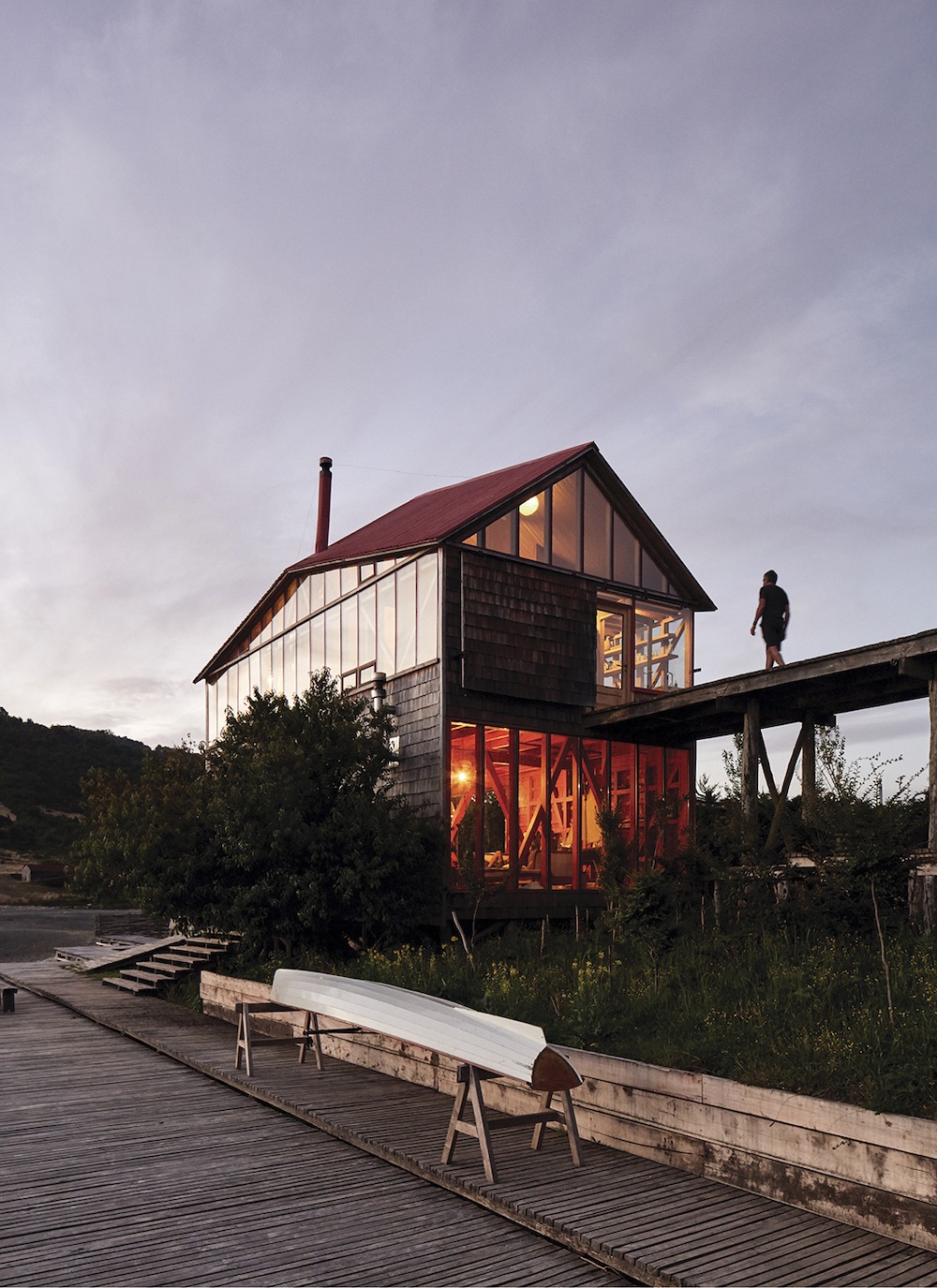
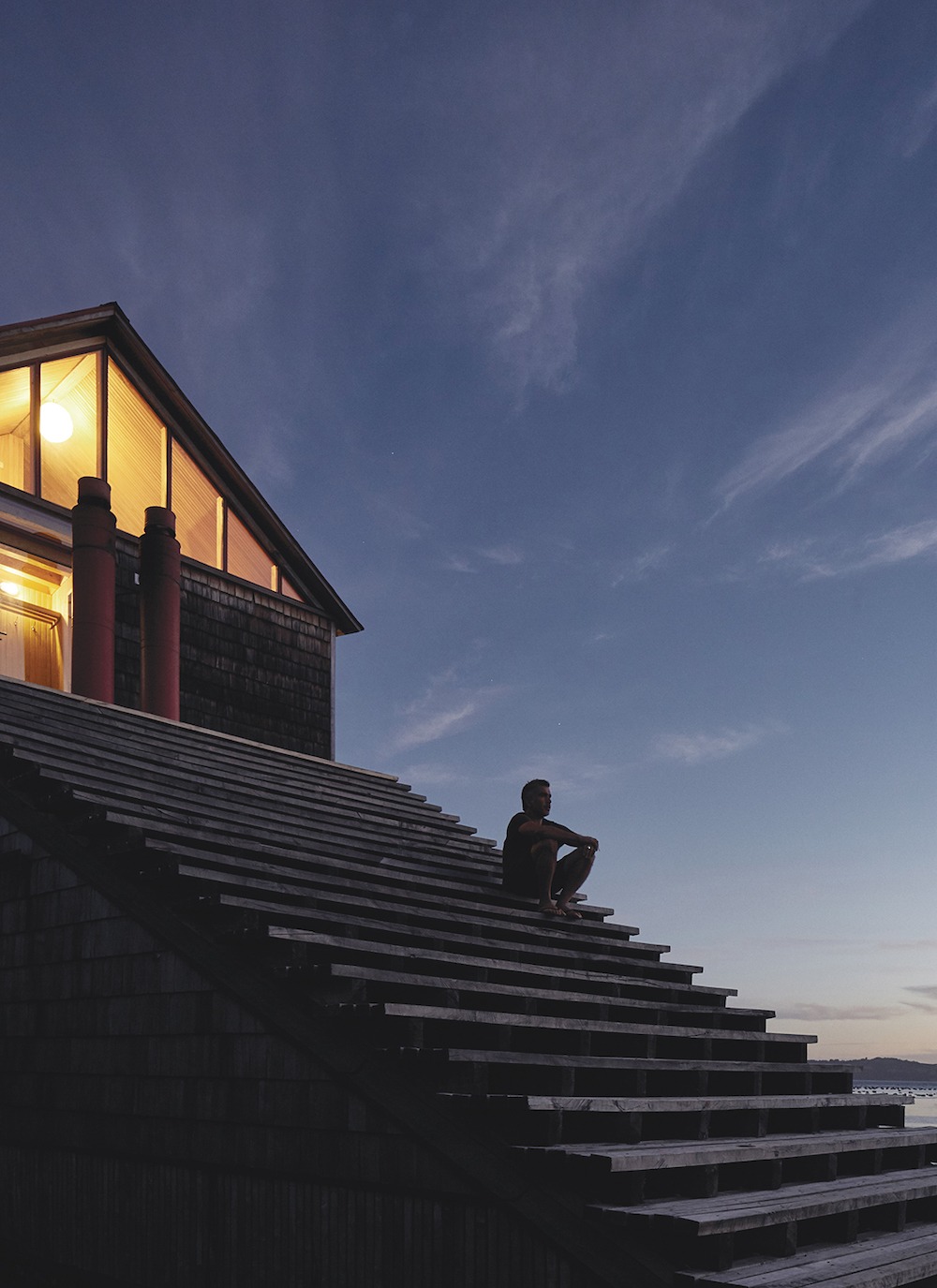
The state of change is not just present in the landscape but is inherent in the culture of this place. In constant state of movement you start to fixate your eye on markers which set orientations and directions. But then I began to wonder if the Isla Lebe Project could ever be read as a fixed object? For me it was important to witness an example of architecture where the architect is interested more in responses than solutions and is attempting to question his role within the project – not as one that is interested in finishing the project but rather as one who is happy for it to be continuously evolving and perhaps sufficiently incomplete.
I will be journeying out to Chiloé Archipelago again soon, to give Guillermo another excuse to make the 900 km journey south from Santiago, for the next edition of the workshop. Little might have changed on my return…
